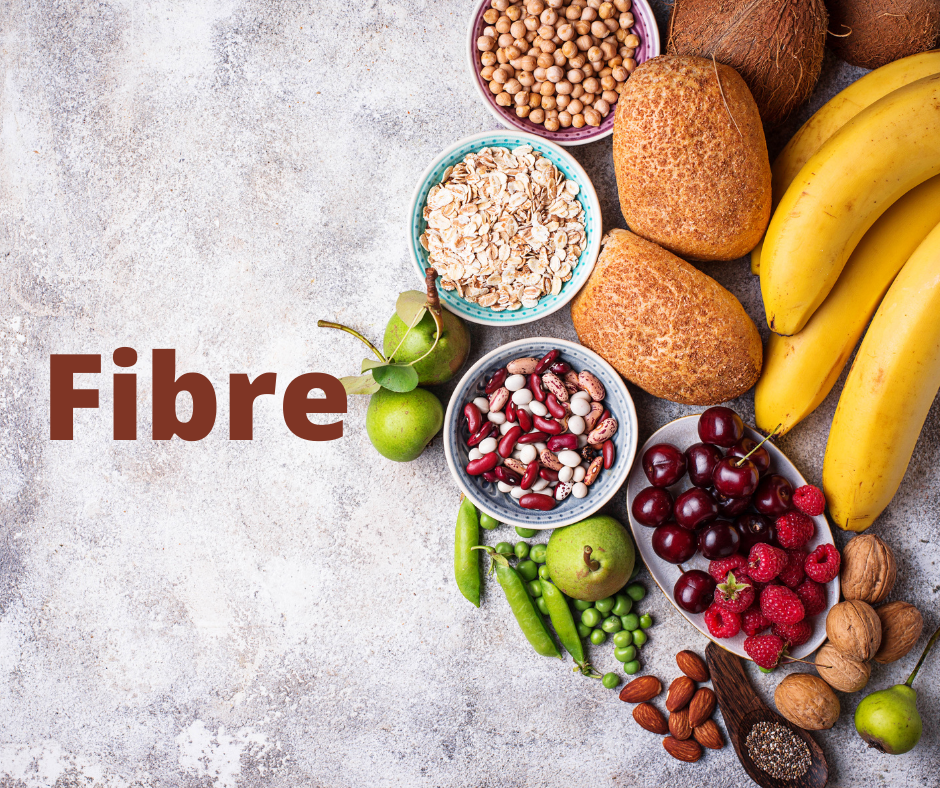Nobody really talks about fibre.
It seems to just get forgotton about.
Interestingly, most women are only eating about half of what they actually need.
Fibre is important no matter what our age, but it becomes even more important when entering menopause and beyond.
What is fibre?
It’s a form of carbohydrate, it can’t be absorbed , or digested by the gut and it’s naturally found in plant based foods like veggies, fruit & whole grains.
Types of fibre
Fibre can be split into two broad groups;
Soluble; This type of fibre forms a gel in the gut, it’s helpful for controlling cholesterol, preventing diarrhea and promoting fullness.
Pears, oats, apples and sweet potatoes are good sources for this type of fibre.
Insoluble; This increases stool bulk, helps with being ‘regular’ and also helps with feeling full.
Skins of fruits & vegetables, as well as nuts, legumes & wholegrains are good sources for this type.
How much do we need ?
About 25gms per day, if menopausal & beyond 30gms.
To give you an idea of what this looks like, it’s about 1/2 a cup of high fibre cereal, 1/2 a cup of beans, a pear & 1/2 a cup of mixed veggies per day.
On average, most women are eating half of that at just 13.5 gms per day.
Why is it so important ?
1.Blood sugar levels & feeling full; Fiber rich foods like veggies, fruit, wholegrains & legumes help us stay fuller for longer , as well as preventing blood sugar spikes & drops.
If blood sugar is stable, then fibre can help relieve hot flashes if you’re in peri or menopause & beyond.
Some research suggests that a fiber rich diet can guard against type 2 Diabetes and assist weight loss.
2.Help control cholesterol; Soluble fibre traps cholesterol , before it gets into the bloodstream.
3.Pelvic floor health; after menopause & beyond it’s crucial to be eating enough fibre.
About 50 percent of women suffer from pelvic floor prolapse, where the uterus, bladder or rectum drop into or out of the vagina.
One factor that can cause this is constipation. It’s very common to develop constipation at this time, as estrogen levels drop, & estrogen receptors in our GI tract reduce, affecting the muscles in the colon.
Being constipated, can make you strain, which can weaken the pelvic floor, as well as causing a prolapse in the vagina, which in turn makes it harder to empty the rectum. And then a vicious circle starts.
Fibre prevents constipation.
4.Digestive health, Gut microbiome & colon cancer;
Fibre gives you many digestive benefits.
Insoluble fibre helps get rid of constipation & Soluble can help with diarrhea .
The more fibre you have from different sources, the greater diversity in your gut microbiome, which has been linked to helping immunity, to metabolism and even our mental health.
In menopause the gut microbiome changes, which research suggests can lead to lowering the metabolism, fat gain and an increase in insulin resistance.
A fibre rich diet has also been shown to guard against colon cancer.
The bottom line is eat fibre & eat enough to keep you in tip, top shape no matter what your age.
Want more great tips on healthy eating, sculpting your body, menopause, exercises & more ?
Claire x
